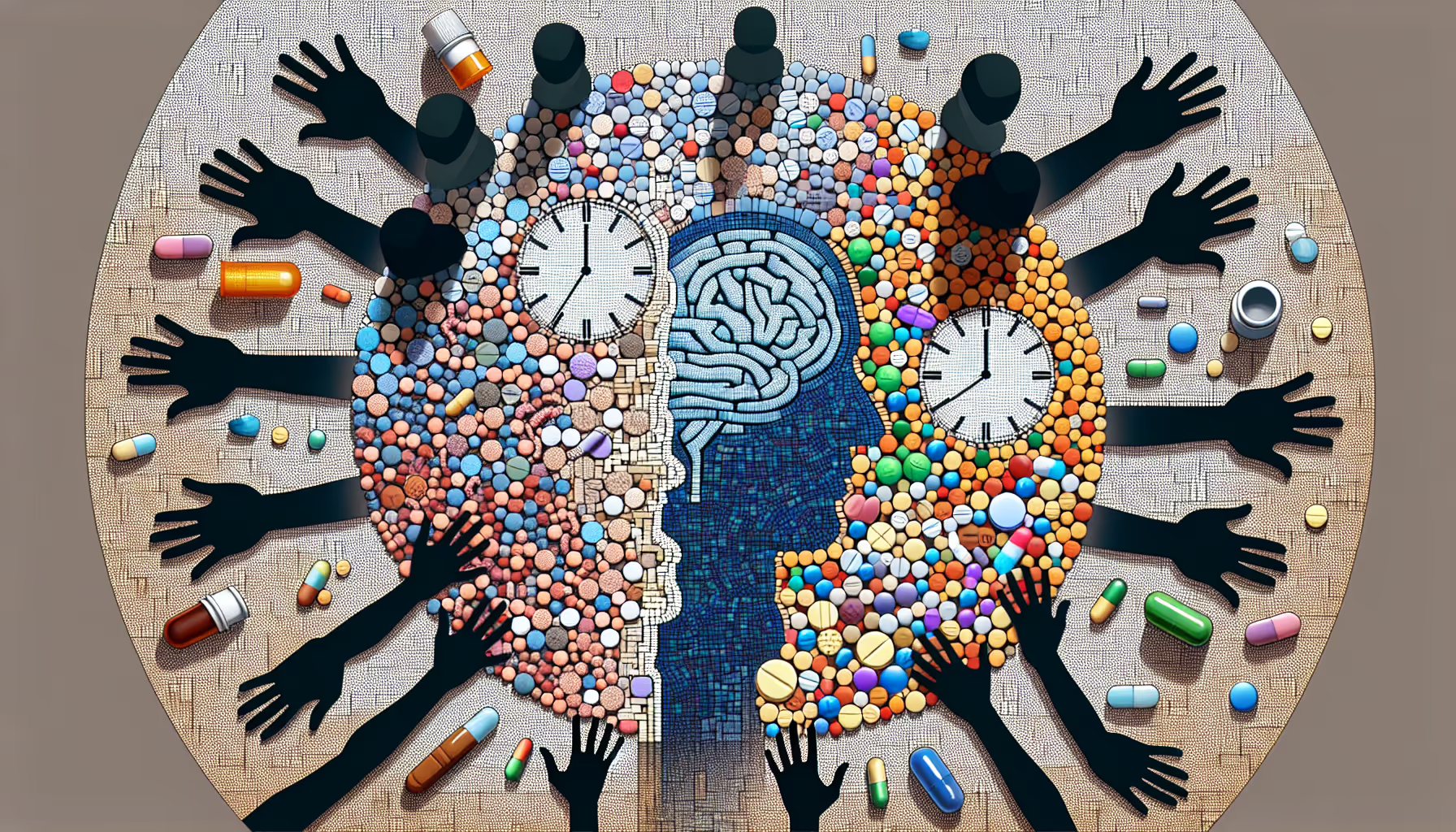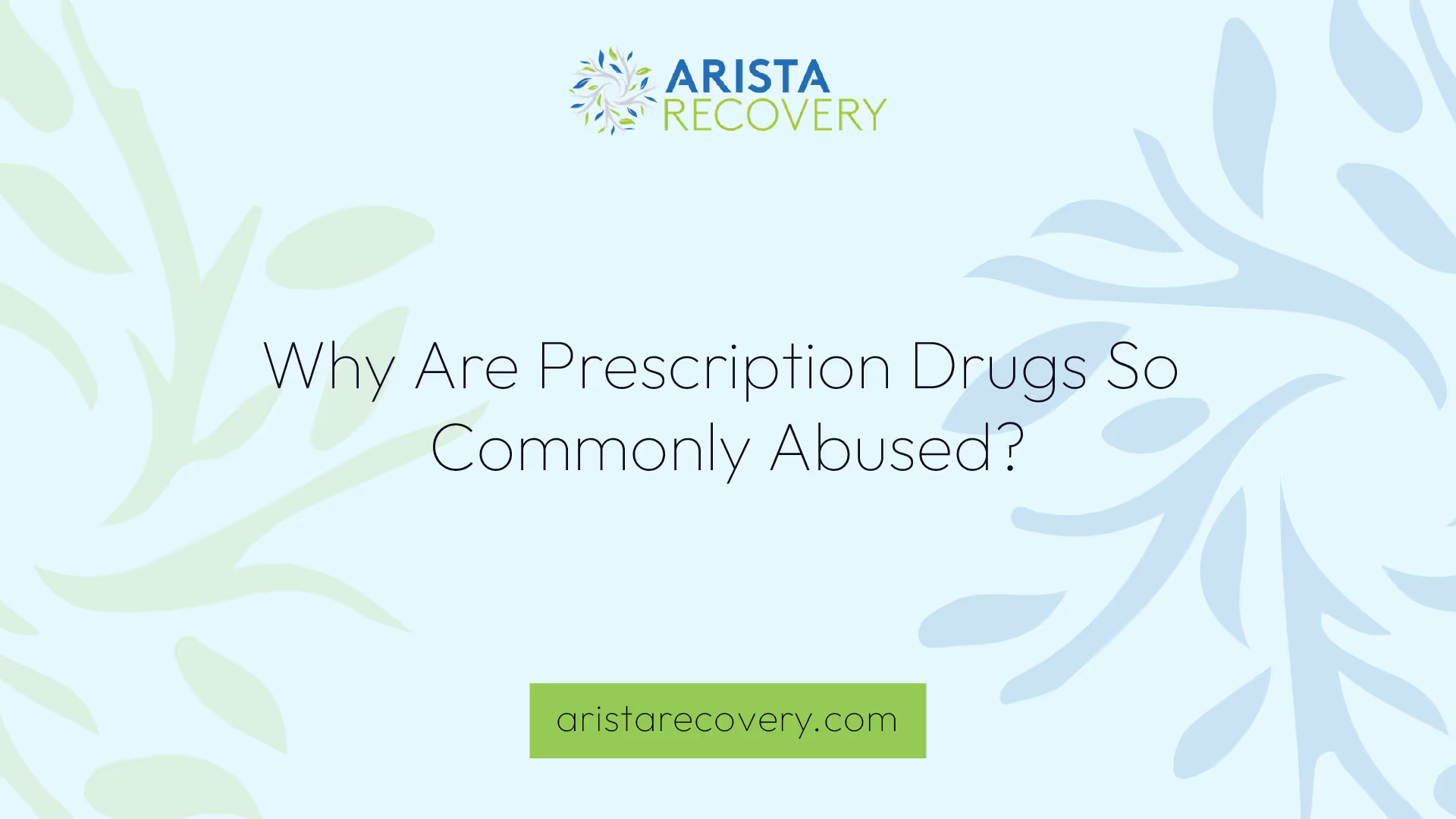Why Are Prescription Drugs So Commonly Abused?

Why Prescription Drugs Get Misused
Prescription meds are lifesavers for many, but when used the wrong way, they can cause big problems. So, why do people misuse them so often?

What is Prescription Drug Misuse?
Misusing prescription drugs means taking them in a way that wasn't intended by the doctor. This could be taking someone else's meds, using more than prescribed, or using them to get high.
The usual suspects in misuse are opioid painkillers, tranquilizers, sedatives, and stimulants. These drugs can be super helpful when used right, but misuse can lead to addiction, overdose, and even death.
How Common is Prescription Drug Misuse?
Prescription drug misuse is on the rise. According to Mental Health America, 7.1% of people aged 12 and older misused prescription drugs last year. It's even worse for those with mental health issues—they're three times more likely to misuse these drugs.
Many people think prescription drugs are safer than street drugs. About 16% of parents and 27% of teens believe this.
Even though they're legal and often necessary, prescription drugs can be just as dangerous as illegal ones when misused. Over 3.2 million people had a prescription drug use disorder last year, but less than half got treatment.
Understanding how common this problem is can help us find better ways to prevent it.
Why Do People Misuse Prescription Drugs?
Several factors contribute to why people misuse prescription drugs. Knowing these can help us tackle the problem more effectively.
Mental Health Issues
People with mental health conditions are three times more likely to misuse prescription drugs. They might be trying to self-medicate undiagnosed issues or just like the way the drugs make them feel.
Thinking They're Safer
Many people think prescription drugs are safer than street drugs. This false sense of security can lead to more misuse.
Lack of Treatment
A lot of people with prescription drug use disorders don't get the help they need. Over 3.2 million people had such a disorder last year, but less than half got treatment. This shows a big gap in our healthcare system.
By understanding these factors, we can start to address the root causes of prescription drug misuse.
How to Prevent Prescription Drug Misuse
To tackle the question of why prescription drugs are so commonly misused, we need to look at the strategies in place to prevent misuse. These include Prescription Drug Monitoring Programs (PDMPs), federal initiatives, and abuse-deterrent formulations.
Prescription Drug Monitoring Programs (PDMPs)
PDMPs are state-run databases that track the prescribing and dispensing of controlled prescription drugs. They help prevent misuse by giving a clear picture of a patient's prescription history and spotting any suspicious patterns.
According to NIDA, PDMPs have been linked to lower rates of opioid prescribing and overdose in some states. But the research is mixed, so while PDMPs are helpful, they aren't a complete solution.
Federal Initiatives
In 2015, the federal government launched efforts to reduce overdose and prevent opioid use disorders. This includes initiatives like the National Institutes of Health’s Helping End Addiction Long-term (HEAL) Initiative.
These initiatives aim to improve access to treatment, promote the use of overdose-reversing drugs, and support research on pain and addiction.
Abuse-Deterrent Formulations
Abuse-deterrent formulations (ADF) of opioid medications make it harder to misuse the drugs by crushing or dissolving them. According to NIDA, these formulations have been shown to decrease the illicit value of drugs.
While prescription drug misuse is a big issue, these strategies can help reduce it.
The Role of Big Pharma
The pharmaceutical industry's influence is a big part of why prescription drugs are so commonly misused. This includes marketing tactics, overprescription, and the role in the opioid crisis.
Aggressive Marketing
Pharmaceutical companies use aggressive marketing to push their products. They offer financial incentives to healthcare providers, which can influence prescribing practices. This has led to the overprescription of opioid medications.
Overprescription
The pharmaceutical industry has promoted opioids for chronic pain while downplaying the risks. This has led to an overprescription of these drugs, making misuse more likely.
The Opioid Crisis
Pharmaceutical companies have been implicated in the opioid crisis. They used aggressive marketing and downplayed the risks of addiction to prioritize profit. They also funded questionable research that downplayed the risks and exaggerated the benefits of opioid medications.
Recognizing the role of the pharmaceutical industry can help us identify areas where reforms are needed.
Who's Misusing Prescription Drugs?
Prescription drug misuse varies by age, gender, and profession. Let's look at some of these trends.
Older Adults
Older adults are often prescribed more medications, leading to a higher risk of misuse. More than 80% of people aged 57-85 use at least one prescription medication daily, with nearly half using more than five. This puts them at risk for drug interactions and misuse.
A 2019 study found that more than 25% of patients over 50 who misuse prescription opioids or benzodiazepines had suicidal thoughts. The number of older adults seeking treatment for opioid use disorder increased by nearly 54% between 2013-2015.
Gender Differences
Men are more likely than women to use almost all types of illicit drugs. However, women are just as likely to develop a substance use disorder. Women are more sensitive to pain and more likely to have chronic pain, which could explain the high rates of opioid prescriptions among women.
From 1999 to 2016, deaths from prescription opioid overdoses increased more rapidly for women (596%) than for men (312%).
Medical Students
Medical students are also at risk for prescription drug misuse. A study found that 10.7% of medical students had used prescription drugs nonmedically. The main reason was self-treatment, but some also used drugs recreationally.
Understanding these trends can help us develop better strategies to address prescription drug misuse.
The Impact of Drug Shortages
Drug shortages are a global issue affecting all types of drugs. Let's look at the causes, economic and clinical implications, and humanistic effects of drug shortages.
Causes
Drug shortages can be caused by supply issues like manufacturing problems, unavailability of raw materials, and logistic problems. Demand issues like just-in-time inventory and higher demand can also trigger shortages. Regulatory issues also play a part.
Economic and Clinical Implications
Drug shortages can lead to increased costs for hospitals, pharmacies, and patients. They can also cause clinical complications like delayed care, medication errors, and adverse events.
Humanistic Effects
Drug shortages can lead to patient dissatisfaction, frustration, and decreased adherence to medication regimens. This can make health issues worse.
In the context of prescription drug misuse, shortages can drive people to seek unsafe alternatives. Addressing drug shortages is crucial in the fight against prescription drug misuse.
References
[1]: https://mhanational.org/risky-business-prescription-drug-misuse
[2]: https://nida.nih.gov/publications/research-reports/misuse-prescription-drugs/how-can-prescription-drug-misuse-be-prevented
[3]: https://www.harmonyridgerecovery.com/pharmaceutical-companies-opioid-epidemic/
[4]: https://nida.nih.gov/publications/drugfacts/substance-use-in-older-adults-drugfacts
[5]: https://nida.nih.gov/publications/research-reports/substance-use-in-women/sex-gender-differences-in-substance-use
You’re not alone in this.
When mental health challenges and addiction intersect, it can feel isolating. At Arista, we offer compassionate, evidence-based, and trauma-informed care to help you heal, grow, and move forward.
You’re not alone in this.
When mental health challenges and addiction intersect, it can feel isolating. At Arista, we offer compassionate, evidence-based, and trauma-informed care to help you heal, grow, and move forward.
Support that moves with you.
You’ve taken a brave first step. At Arista Recovery, we’re here to help you continue with best-in-class care designed for long-term healing and support.
.webp)






